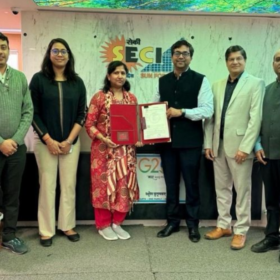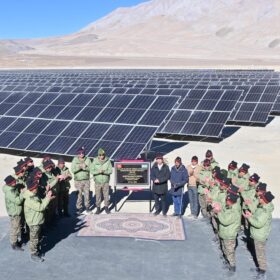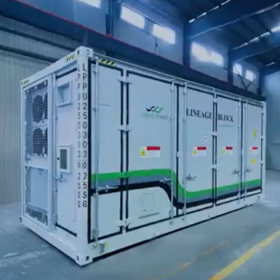Reliance Industries Limited (RIL) is set to begin production at its upcoming battery gigafactory in 2026, with an initial annual capacity of 40 GWh. The facility will later be modularly scaled up to 100 GWh per annum, announced Anant Ambani, executive Director of RIL, during the company’s annual general meeting recently.
The battery factory is located within the Dhirubhai Ambani Green Energy Giga Complex in Jamnagar, Gujarat, which also houses gigafactories for solar modules and electrolyzers.
Ambani said RIL’s electrolyzer gigafactory is also scheduled to start production by the end of 2026. This facility will have the capacity to scale up to 3 GW per year, enabling cost-competitive production of green hydrogen at a global scale. The electrolyzer plant is backed by exclusive global technology partnerships and RIL’s in-house capabilities.
The solar PV manufacturing facility at the Dhirubhai Ambani Green Energy Giga Complex is already operational. It has successfully produced its first 200 MW of high-efficiency heterojunction technology (HJT) solar modules. “These modules are demonstrating industry-leading performance—delivering 10% higher energy yield, 20% better temperature tolerance, and 25% lower degradation,” said Ambani. RIL plans to scale this facility to 10 GW of annual solar PV manufacturing capacity in the coming quarters, with further expansion to 20 GW, making it the largest and most integrated single-site solar manufacturing complex in the world.
Together, these platforms will create a multi-pronged, gigawatt-scale clean energy ecosystem housing solar, battery storage, and green hydrogen production equipment all under one roof. “This integrated approach not only delivers scale but also builds a competitive edge in cost, technology, and supply chain resilience, positioning Reliance to capture significant value as the global energy transition accelerates,” said Ambani.
“Reliance will be the world’s only fully integrated, self-sufficient new energy company,” he added.
Ambani said that work on the Dhirubhai Ambani Giga Energy Complex is progressing at a record pace. It will be unmatched globally in size, scale and integration. The Complex spans 44 million square feet of built-up area, equivalent to four times the size of the Tesla Gigafactory.
With this, Jamnagar becomes the cradle of both the world’s largest conventional energy complex and the world’s largest new energy complex.
RIL is also developing one of the world’s largest single-site solar projects in Kutch, Gujarat, spanning 550,000 acres of arid land, three times the size of Singapore. At peak construction, the site will deploy 55 MW of solar modules and 150 MWh of battery storage containers daily. “This will be among the fastest installations globally. [Once operational] this single site could meet nearly 10% of India’s electricity needs within the next decade,” said Ambani.
RIL’s marine and land infrastructure at Jamnagar and Kandla will connect seamlessly with solar and hydrogen production sites at Kutch, facilitating large-scale export of green hydrogen and its derivates as the company scales up to 3 million metric tons per annum of green hydrogen by 2032. “We will produce and export green ammonia, green methanol and sustainable aviation fuel. This will make India a global hub for cost-competitive green hydrogen and its derivatives. While our initial focus will be to meet Reliance’s own large captive demand, we plan to scale up to 3 million metric tons per annum of green hydrogen by 2032. This will unlock a powerful growth engine for global markets,” said Ambani.
This content is protected by copyright and may not be reused. If you want to cooperate with us and would like to reuse some of our content, please contact: editors@pv-magazine.com.









Congratulations,
From Durubhai Ambani onward RIL always think and act to be global leader in every diverse field they put their hand and brain on. I am proud to be a share holder of RIL almost from Vimal times.